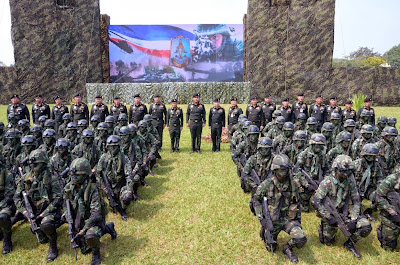The South Korean Navy believes it can deploy two light aircraft carriers by 2036 and expand its blue-water force to cope with the rapid naval buildups of China and Japan, according to a Navy source.
The service has been exploring ways of securing light aircraft carriers based on an interim feasibility study, the source said.
“It’s a hope,” the Navy source said on condition of anonymity. “There are no fixed requirements at the moment, but we’ve been studying ways of launching light aircraft carriers over the next two decades.”
Rep. Chung Hee-soo of the ruling Saenuri Party revealed the contents of a program in a feasibility report last week.
“To cope with potential maritime disputes with neighboring countries, we need to secure aircraft carriers as soon as possible,” Chung, a member of the National Assembly’s Defense Committee, said during a confirmation hearing Oct. 11 for Adm. Choi Yoon-hee, new chairman of the Joint Chiefs of Staff. “For more active international peacekeeping operations, our Navy should have carriers.”
According to Chung, the Navy envisions three phases:
■The first is to equip the second ship of the Dokdo-class landing platform helicopter ship (LPH) with a ski ramp to operate short-range or vertical take-off and landing (VTOL) aircraft.
The flight surface of the landing ship is already sprayed with urethane, which can withstand the heat created by the aircraft during operations.
Dokdo, with the addition of a ski ramp, could be deployed before 2019,according to the report, which suggests the Navy procure used VTOL jets from the US, UK and Spain if needed.
■Second, the Navy could build an amphibious assault ship, similar to the Spanish Navy’s Juan Carlos, before 2019.
■Finally, the service aims to build two 30,000-ton light aircraft carriers between 2028 and 2036, the report said. The carrier is to have specifications similar to the Italian aircraft carrier Cavour, which can support about 30 aircraft.
“We should have capabilities to deter North Korea, and at the same time, we need minimal capabilities to respond to potential threats from neighboring countries,” Choi replied to Chung, apparently referring to the naval buildups of China and Japan.
China commissioned its first aircraft carrier last year, with three more carriers planned. Japan, whose Navy is classed as a self-defense force, has controversially unveiled a 20,000-ton helicopter destroyer akin to a small aircraft carrier.
More Aegis Ships and Jets
term procurement plans to further strengthen its naval power.
The service plans to commission three more 7,600-ton KDX-III Aegis destroyers by 2023 to develop a strategic mobile fleet. The service has three KDX-III destroyers fitted with Lockheed Martin-built SPY-1D radar capable of tracking incoming ballistic missiles and enemy aircraft.
“The construction of new Aegis ships could be completed earlier than scheduled,” Adm. Hwang Gi-chul, chief of naval operations, testified. “And the new Aegis ships will have better stealth functions than those with the existing ships.”
The Navy will also launch six, 5,900-ton next-generation destroyers — dubbed KDDX — after 2023.
The development of an attack submarine is on track, according to the Navy. The service plans to commission six more 1,800-ton Type 214 submarines to bring the 214 fleet to nine subs by 2023. After that, it will deploy nine, 3,000-ton heavy attack submarines codenamed KSS-III. The KSS-III is to be equipped with a vertical launch tube to fire a 1,500-kilometer cruise missile that can hit key targets in North Korea.
Other procurement plans include the FFX program to build a dozen new frigates with advanced sensors and a wide variety of weaponry. The FFX program is intended to replace the aging fleet of existing Ulsan class frigates and Pohang class corvettes with multimission frigates.
The 2,300- to 3,000-ton FFX vessels are to be built in two batches with an objective of putting up to 24 ships into service by 2026.
The Navy also puts a priority on acquiring reconnaissance and surveillance aircraft. In particular, the service laid out plans to buy the Lockheed S-3 Vikings retired from front-fleet service aboard aircraft carriers by the US Navy in January 2009.






























